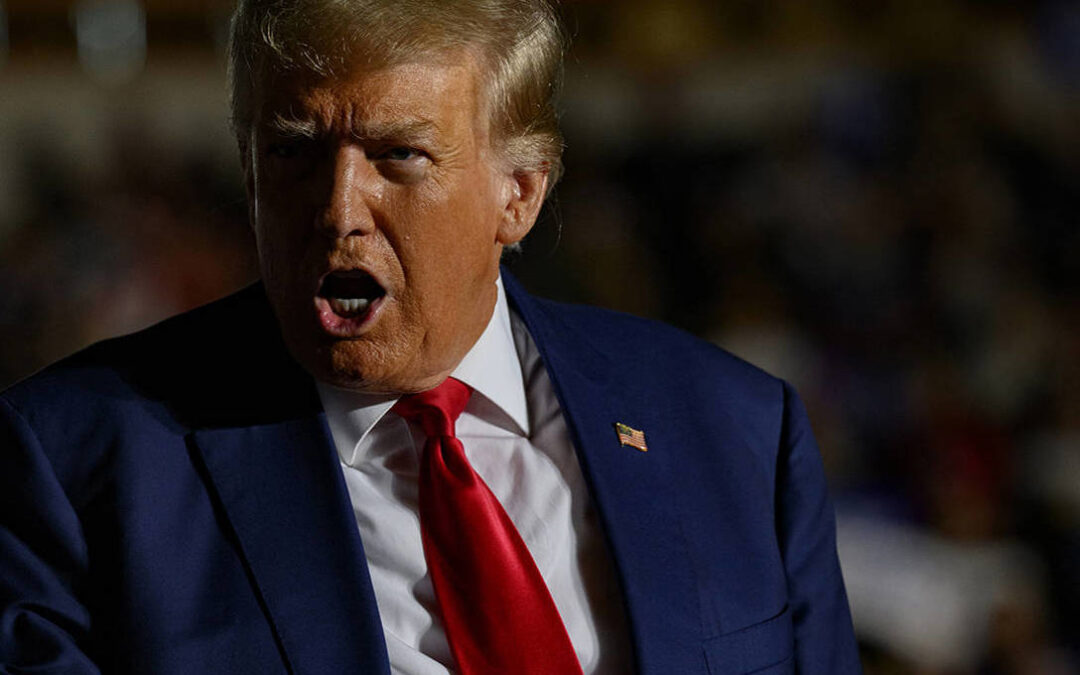The announced April 2nd tariffs were much worse than most analysts and markets expected; thus, on Thursday April 3rd US equity markets were way down (with losses btw 4% and 6% on main indices and Friday markets showing further losses as China has started to retaliate) and large (if smaller) losses on other global equity markets such as Asia and Europe.

The April 2nd tariff announcements were:
- Universal tariff of 10% for all US partners (but not on countries subject to much higher reciprocal tariffs).
- Reciprocal tariff of 20% on Europe
- Tariff up to 54% on Chinese goods as a new 34% reciprocal tariff is added on existing 20% tariff (that was officially imposed in Q1 because of the fentanyl issue). This on top of other tariffs imposed during Trump 1.0 and the Biden administration (such as 100% tariffs on Chinese EVs).
- Reciprocal tariffs are very high on most Asian partners: from 24% for Japan to 49% for Cambodia and others in between: Malaysia at 24%, South Korea at 25%, India at 26%, Pakistan at 29%, Taiwan at 32%, Thailand at 36%, Indonesia at 32%, Sri Lanka at 44%, and 46% on Vietnam.
- Previous postponed tariffs of 25% on Mexico and Canada (but not reciprocal) to start soon; but wide exemptions for USMCA traded goods; but no new tariffs so far, the two North American trading partners.
- 25% tariffs on all auto imports.
- Possible new sectoral tariffs to be announced in the near future on sectors other than autos (on pharma, semi-conductors, etc.).
- Steel and aluminum are not subject to reciprocal tariffs as already subject to new 25% tariffs.
- Estimates – from ISI Evercore – are that the announced tariffs imply effective tariff rates of 29% that are 50% higher than those in 1930 during the Great Depression following the Smoot-Harley tariff. Others estimate – depending on detailed measurements – these tariffs to be smaller to about 25-30%.
Negotiations will start – hopefully soon – to negotiate down such high tariffs. Bessent strongly suggested that trade partners should not retaliate but start negotiations to reduce their trade restrictions as announced tariffs are a maximum to de-escalate from, as long as trade partners don’t retaliate. Trump said that tariffs could be reduced if trading partners make some “phenomenal” offers. So, the “tradeability” of tariffs is low: Bessent is flexible but, according to Trump, the bar will be “phenomenally” high, to get lower tariff; this may still be some signaling on his side to keep leverage in the negotiations. There is a clear risk is that some countries will retaliate and that may lead to a wider trade war: China certainly will and it started doing it today by imposing a matching 34% tariff on US imports; EU possibly will even if it is already sitting down to negotiate with US; and Canada will likely retaliate given the upcoming elections and Carney correct need to look tough versus the US; Mexico instead is playing the long game of hoping that USMCA negotiations – and cooperation on immigration and fentanyl/drug cartels – lead to smaller eventual tariffs. Retaliation matters as the risk of a US and global recession rises if there is a growing trader war.
Also, some other Asian partners and/or allies may want to retaliate even if they are probably better off sitting down and negotiating for the time being. India will negotiate and reduce trade barriers among other countries and possibly negotiate an FTA. Tariffs are much higher than expected on most Asian trade partners, even friends and allies if they are running large trade surpluses (with Australia spared from reciprocal tariffs but subject – like a few others such as the UK – to the 10% universal tariff). So, the big issue is how much of “escalate to de-escalate” from now on and how fast via bilateral trade negotiations. Thus, a lot of uncertainty remains on what eventual post-negotiation final tariff rates will be. Some trade partners will start negotiations; some will initially unilaterally reduce trade restrictions as a first goodwill gesture; some (China) will retaliate and only then start long-drawn negotiations. A good scenario would be one where after negotiations the tariff rates are about 50% of the announced one (“escalate to de-escalate” scenario); a worse scenario is one where post-negotiation tariff rates are 75% of the announced ones (“escalate permanently” scenario). The difference between the two scenarios is that the former avoids a US and global recession while the latter leads to one that is quite severe.
These tariffs will reduce US growth and increase US inflation; they will reduce growth even more than in the US in the affected US trade partners (more so those with larger trade surpluses relative to their GDP and subject to reciprocal tariffs) while imparting a disinflationary impact on the affected trade partners as this is an aggregate demand shock that leads to serious excess capacity in the US trade partners. So, inflation will be higher in the US and lower in most of the rest of the world unless there is a full scale trade war led by mutual retaliation escalation.
The net economic impacts also depend on the policy responses: certainly, fiscal easing in most of the rest of the world (and some additional monetary easing in some such China, EZ, etc.). The fiscal response in the US being ambiguous as Trump tax cuts may be in part compensated by tariffs revenues and DOGE spending cuts and possible other tax increases. Net fiscal stimulus in the US would reduce the negative growth impact but push long bond yields higher over time; while net fiscal drag will worsen growth outlook while reducing the upward pressure on long rates. On net, for now it looks like that there will be a net fiscal drag as making the 2017 tax cuts permanent ( $400 bn cost per year) doesn’t affect in 2015 the 2024 $1.8 trillion deficit baseline while tariff revenue would increase taxes by about $300 bn, additional tax cuts promised by Trump during the campaign may be $150 bn, DOGE spending cuts will be at most $100 bn this year, other tax increases may add to $50 bn while other spending savings (possibly on IRA subsidies and Medicaid) could be $100 bn. The good news is that the deficit somehow shrinks; the bad news is that the fiscal drags makes a recession more likely in the US this year. But the final fiscal path in 2025 and beyond is subject to significant negotiation in Congress and between Congress and the White House.
Policy responses abroad may also include currency movements discussed in more detail below: the greater the fiscal stimulus the less the need for currency depreciation as a way to compensate for the tariffs’ demand shock; also, such fiscal stimulus abroad may on its own strengthen those foreign currencies relative to the US dollar.
Of course, on impact the tariff announcement is risk off and leading to much lower US bond yields and lower US equities; but over time the impact of tariffs will lead to higher bond yield as inflation rises, unless the US falls in a serious recession and the Fed cuts rates rather than stay on put (or even hike if inflaton surges). For now, the tariff announcement makes it more likely that Fed stays on hold as inflation will be much higher in 2025 and inflation expectations could de-anchor to the upside. What happens to inflation expectations is key for the Fed reaction function even if measuring such expectations is not simple. So, in spite of downside risks to growth and to US equities the Fed has for now stay on hold and even signal that rates may go higher if inflation rises persistently (rather than temporarily) and inflation expectations increase. The Fed cannot afford to lose its reputation and may want to put indirect pressure on Trump to de-escalate on tariffs.
Monetary policy abroad is overall faster and greater easing as disinflationary pressures will build, unless there is a severe trade war that is initially inflationary for all and later somewhat deflationary as the global economy enters a severe recession.
Other asset prices moved as expected: gold prices were initially higher as safe haven effect worked but then corrected down as gold was swamped by the overall lower commodity prices fall; lower energy prices as demand will fall with lower global growth; ditto for other industrial metals and even agricultural commodities. The impact on currencies was at odds with ex-ante expectations as the dollar was weaker relative to yen, euro, CHF, Nordic currencies and other currencies. This is a signal that there is a rising risk that investors may be losing confidence in the US: not just its economy but also its markets and its policy stability and predictability. So significant capital flight that weakens both the dollar and other US assets (stocks and even bonds) could occur in a dangerous vicious cycle.
The US dollar was stronger mainly relative to the Chinese yuan as China is struggling to decide whether to react to the tariffs by weakening – like in 2018-19 – its currency. But the Trump tariffs on China in 2018-19 were a fraction of the current one and trying to weaken the yuan by 50% or so would be highly deleterious even for China (risk of massive capital flight, inflation in China, further global trade and currency wars, trade frictions with Europe, Asian and global south, bigger risk of deflation outside of Asia ex-US as China would try to dump its excess capacity on the rest of the world ex-US and thus trigger mass trade wars with all its major trading partners). So, compared to 2018-19 China has serious constraint to the use of the currency as a way to compensate for the new US tariffs. It is more likely to retaliate and then sit down and negotiate with the US; but a grand bargain between US and China is not very likely for now.
China and other trade partners such as EZ will need to decide on how much to react to tariffs via fiscal stimulus versus a currency weakening; the former choice leads to stronger currencies while latter one obviously leads to a weaker currency. Given net additional monetary easing in EZ, China and many other countries (but not the US) we will get both fiscal stimulus and some currency weakening for some trade partners; but for others in Asia the incentive will be for fiscal stimulus and letting their currencies strengthen over time to reduce their trade surpluses and the tariffs imposed the US; so, for example, the yen will over time likely go higher; ditto some other surplus trade partners – such as South Korea and Taiwan – if they want to humor rather than confront the US and convince Trump to reduce the reciprocal tariffs imposed on them.
Will we end up in the good scenario of lower US and global growth but not a recession or in the recession scenario in 2025? Market analysts have already mostly increased their recession probabilities from 35% to 50%. A lot depends on whether we quickly get into negotiations that de-escalate the eventual tariffs to about 50% of the announced one, in which case the recession is avoided even if there is a sharp growth slowdown this year. My personal baseline is that the we end up in the better scenario as Trump’s political goals of making the MAGA agenda permanent and win elections in 2026 and 2028 is seriously damaged by a US recession and a market meltdown. So, partially de-escalate should be the right rational approach for Trump.
But so far market discipline has not worked in constraining Trump as equity prices are in correction or even bear market (for the Russell index) but that is not as painful for MAGA voters as they have only modest equity wealth. Instead, for now the dollar is weaker without bond yields being higher; so that is a partial easing of financial conditions. Trump doesn’t mind a weaker dollar – as long as it doesn’t trigger higher bond yields – as it leads to more trade competitiveness (it is like additional tariffs). But over time higher tariffs and lower dollar lead to even more inflation and risk of higher inflation expectations. Also, for now lower bonds yields are a positive in Trump’s view as most of his base cares more about the bonds market – and cost of borrowing – than about the stock market. So, for now the bond vigilantes are not imposing market discipline on Trump as the risk off and risk of higher recession outweigh the risk of higher bond yields because of the inflationary impact of tariffs and a weaker dollar.
Compared to his first term Trump cares less about the stock market and his threshold for pain is higher as he strongly wants to reshore manufacturing and jobs to the US and he believes that tariffs that are high enough and perceived to be permanent will do the job over the next few years. So, he sees the long term benefits of tariffs – in his views more jobs in the US and higher real wages for left behind blue collars that are part of his base. And he is willing to impose pain on the corporate sector and their profits and stock valuation and on the real incomes of elite educated and more skilled urban classes to achieve the goals of helping his “left behind” base. He may even be willing to accept a short and shallow recession to achieve his goal of reversing the US manufacturing “carnage”.
The obvious risk is that the recession is not short and shallow and that its medium term political goals – making MAGA move in the US permanent and dominant politically – fails. So, Trump needs to decide soon how much he is willing to risk a recession and the short term political costs of it. My view is that those risks are too high and we will partially blink: thus the escalate to de-escalate scenario is more likely (60% probability) relative to the US/global recession scenario (40% probability). But in a trade retaliation and escalation scenario the recession risk can keep on rising.
The US also benefits of two other tailwinds that reduce the risk of a recession this year. First, so far, the hard economic data have been stronger than the soft sentiment data. But this can change if the US doesn’t rapidly de-escalate with quick trade negotiations that reduce tariffs to 50% of April 2nd announcements. The Atlanta Fed Nowcast shows a growth contraction of 2.8% in Q1 but the figure is distorted by high gold imports; correcting for that the Q1 contraction is only 0.8% and probably biased by front loaded imports of many goods in expectation of tariffs; measures of final sales are still quite positive in the Atlanta Fed Nowcast.
Second, the AI-driven capex boom in the US is still ongoing and it will not be affected by tariffs among the hyperscalers, in the broader tech sector and even – to large extent – in the broader corporate sectors. Over the medium term – by 2030 US potential growth – will be at least 3% and possibly even 4%. High tariffs may reduce that potential growth by 50-75 basis points but even in that case “Tech Trumps Tariffs”. So, it would take a major and unlikely policy screw up to destroy the TFP growth boom ahead given the AI and broader tech innovations. So, in spite of the short term tariff noise and uncertainty – if not chaos – over the medium term Tech Trumps Tariffs!
By Nouriel Roubini









